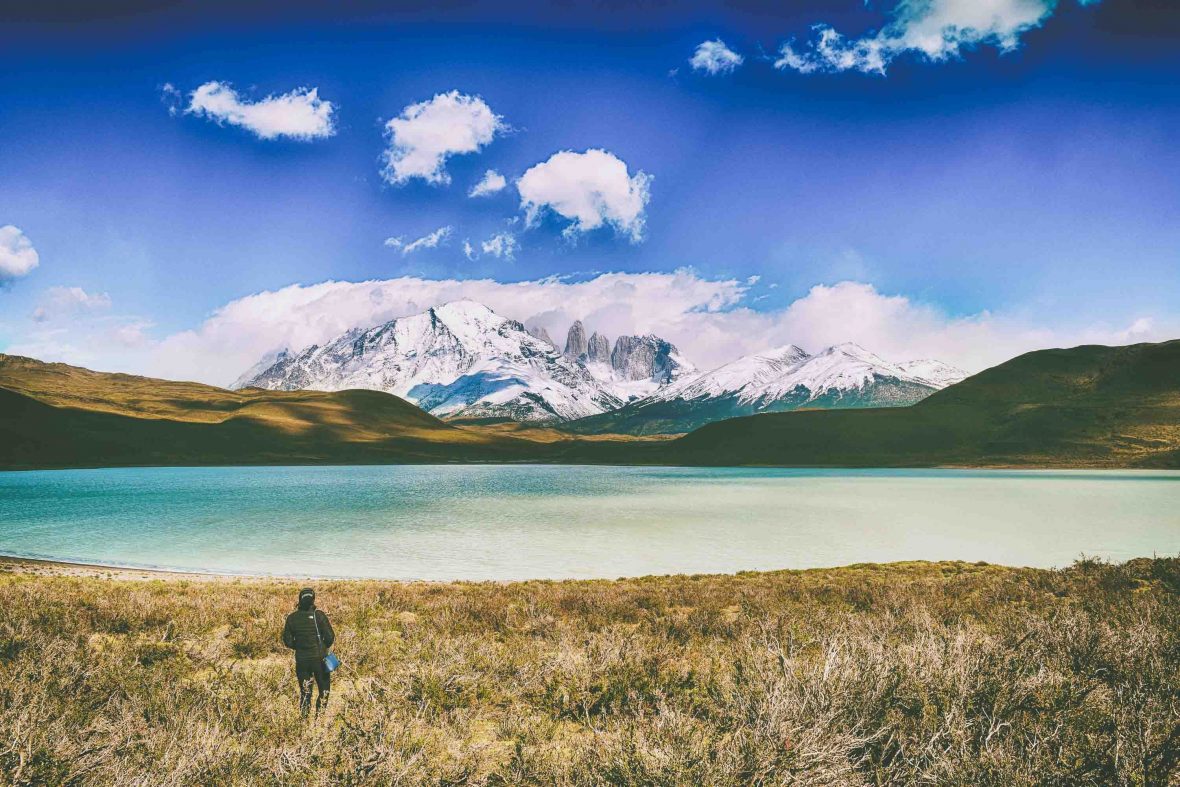
Some people love hiking, others can’t think of anything worse than sweating up a hill for a view. But what about the reluctant hiker? Meera Dattani explores the lure of trekking—even when you’re not very good at it.


Some people love hiking, others can’t think of anything worse than sweating up a hill for a view. But what about the reluctant hiker? Meera Dattani explores the lure of trekking—even when you’re not very good at it.
Google ‘reluctant hiker’ and most articles are aimed at mum-and-dad trekkers who want to encourage unwilling offspring to head into the hills with them.
But the thing is, we come in adult form too.
I am not a natural hiker. I like walking, nature and views, and if you do the math(s), it does add up to hiking. But mathematics has variables. Each time I go for what I tell myself is ‘just a very long walk’, I realize my ‘urban fitness’ levels are no match for altitude, long distances and inclines. And yet I keep on hiking.
You’d think I’d learn. But there I am, crying on a boulder en route to Dominica’s Boiling Lake because “my legs won’t work anymore” or wondering if Uganda’s mountain gorillas are “really worth it” when our trackers tell us our group is camped at the top of the highest hill, that our hike will be closer to seven hours than four, and we’ll be the last group back.

So why continue? Because, I suppose, I know it is worth it. It all started about 10 years ago in Patagonia, my first ‘proper’ hiking trip where we climbed to places of such staggering beauty, such as Mount Fitzroy in Argentina and Torres del Paine in Chile, that I realized you simply cannot see this type of landscape and feel that kind of thrill unless you get this close.
There’s more than one way to trek. Some want to get from A to B as quickly as possible; others want to stop and smell the roses. I’m all about the roses.
But it was a decade later, on Peru’s seven-day Salkantay Trail, an alternative, longer (74 kilometers) and arguably prettier hike than the Inca Trail through 15 ecosystems, that really sealed my love for this hiking malarkey. And when the final destination is the citadel of Machu Picchu, well …
“Oh, but you’re not camping?”
There are many ‘myths’ associated with hiking. And one is the idea that the act of hiking has to be accompanied by the act of camping.
Busted. I’m staying in lodges on this one. Very nice, community-run (by the local Quechua people), luxury lodges—I don’t need them to be this nice (we’re talking hot tubs, gourmet meals, masseuse, traditional Pachamanca ‘underground oven’ lunches)—but I’m not complaining. I can assure anyone that not traipsing to a shower block or using a headlamp to brush my teeth does not take away from the beauty of having hiked the Peruvian Andes all day.
“That’s not proper hiking,” one traveler tells me. But I’m still trekking the same mountains as the next happy camper, still puffing up along the same inclines, and still navigating the same ancient paths. I just don’t have to sleep on a ground mat at the end of the day. And I have wine for dinner and one night, a pisco sour-making lesson.
I’ve also realized that gadgets and gear do not a hiker make. One of the freedoms of non-technical hiking (to be clear, I choose intermediate trails, moderately challenging in parts) is not having to carry the contents of an outdoorwear shop’s storeroom in your backpack.
Less is more (tempting as those outdoor gear shops are), but the key to easy, comfortable hiking is not to skimp on the essentials. My hiking trousers are stretchy and roomy, my worn-in, waterproof hiking boots a second home for my feet, I take plenty of Merino wool hiking socks, light waterproof jacket and trousers, moisture-wicking tops and one warm fleece. In my light daypack, there’s a water carrier, wine gums for a quick sugar boost, water spray, white cap, sunglasses, simple first-aid kit and a power bank (if using smartphone all day as a camera). And if there’s the chance of a swim, swimwear.
Confession: You can’t get too stressed when one of your hiking companions is an ‘emergency horse’ carrying extra water, oxygen and other supplies.
And two things I took on the Salkantay that I’ll now never hike without: A portable USB-chargeable fan that stays charged for hours and gives instant relief from humidity, and a pair of light, retractable walking poles. Banish images of elderly walkers in the Alps; poles are amazing props, handy to lean on when it gets too much, and they do not diminish your trekking cred.
Another lesson: There’s more than one way to trek. Some want to get from A to B as quickly as possible; others want to stop and smell the roses. I’m all about the roses. Besides, I didn’t want to miss one minute of the Peruvian highlands, one of the prettiest landscapes I’ve hiked, with its bright blue lakes, purple lupin flowers, mix of jungle, valleys and peaks, and glimpses of towering Mount Salkantay.
For guides, group hikes are often a diplomatic effort to keep the balance—and peace—between the fast and the slow. But while hiking the Salkantay, almost always at the back, I realized this scenery was way too spectacular to worry about who was ahead.
A few tricks don’t hurt. Each time one particularly plant-obsessed hiker stopped to ask our guide Wilfredo about various flowers and shrubs, so did I. Another, a keen snapper, was always seeking unusual photo opps. And when you’re huffing away at the back, there’s no better ruse than a sudden and ardent love for photography or botany.
And if the hike is aimed at anyone with a decent level of fitness (and you fall into that) then I say boo to those who sprint ahead only to tch-tch when you eventually catch up. It’s your hike too!
Sometimes, it’s about treating yourself like a small child. I always knew approaching the 4,600-meter-high Salkantay Pass, the highest point of the trail, on day three, was going to be tough. Preparation was key and I was armed with my favorite snacks to keep me going.
I’d already had 36 hours of altitude sickness back in Cusco (another tip: If acclimatization time is recommended, have three nights in situ to allow for it) and I knew the altitude could get to me again.
Confession: You can’t get too stressed when one of your hiking companions is an ‘emergency horse’ carrying extra water, oxygen and other supplies. Although determined not to use it, I did, for about 15 minutes on a particularly tricky ascent, encouraged by Wilfredo. Similarly, if a porter offers to carry your daypack when you’re struggling, do it—a lighter load makes a big difference. On a different trip in Uganda where our hike turned out to be unexpectedly strenuous, this extra help meant I could enjoy seeing the gorillas instead of arriving in a breathless heap at the top of the mountain.
The truth is many of us get away with being ‘city-fit’ ((if that). For me, that means I walk a lot, play tennis once, maybe twice a week, yoga a couple of times, and generally run around a lot—but then a hiking trip catches you out. On the plus side, it can act as a bit of an alarm bell or a pilot light igniting your desire to get fitter.
But equally, I don’t believe you ‘have to hike’, not even in holy grails such as Peru. Trips should be what you want them to be, not what anyone else thinks they should be—and hiking is not the only way to enjoy a country’s scenery. There’s nothing like pressure to take away joy.
But when I see that end-goal view or find myself beside a serene waterfall or lay eyes on a lake so blue it looks like a painting (I’m looking at you, Lake Humantay), I fall in love with hiking all over again and forget how much I (sometimes) hate it. If I’m honest, my ambitions are small: I just don’t want to be last all the time. Second from the back would be just fine. Roll on the next one.
—-
The writer traveled with Mountain Lodges of Peru on their Salkantay Lodge to Lodge Adventure.
****
Adventure.com strives to be a low-emissions travel publication. We are powered by, but editorially independent of, Intrepid Travel, the world’s largest travel B Corp, who help ensure Adventure.com maintains high standards of sustainability in our work and activities. You can visit our sustainability page or read our Contributor Impact Guidelines for more information.

Meera Dattani is executive editor at Adventure.com and an award-winning freelance travel journalist, with an interest in food and cultural heritage, wildlife, conservation, identity, and decolonizing and modernizing travel. Based in London, she has written for publications such as National Geographic Traveller, BBC Travel, Lonely Planet, Condé Nast Traveller, and Travel Weekly.






Can't find what you're looking for? Try using these tags: